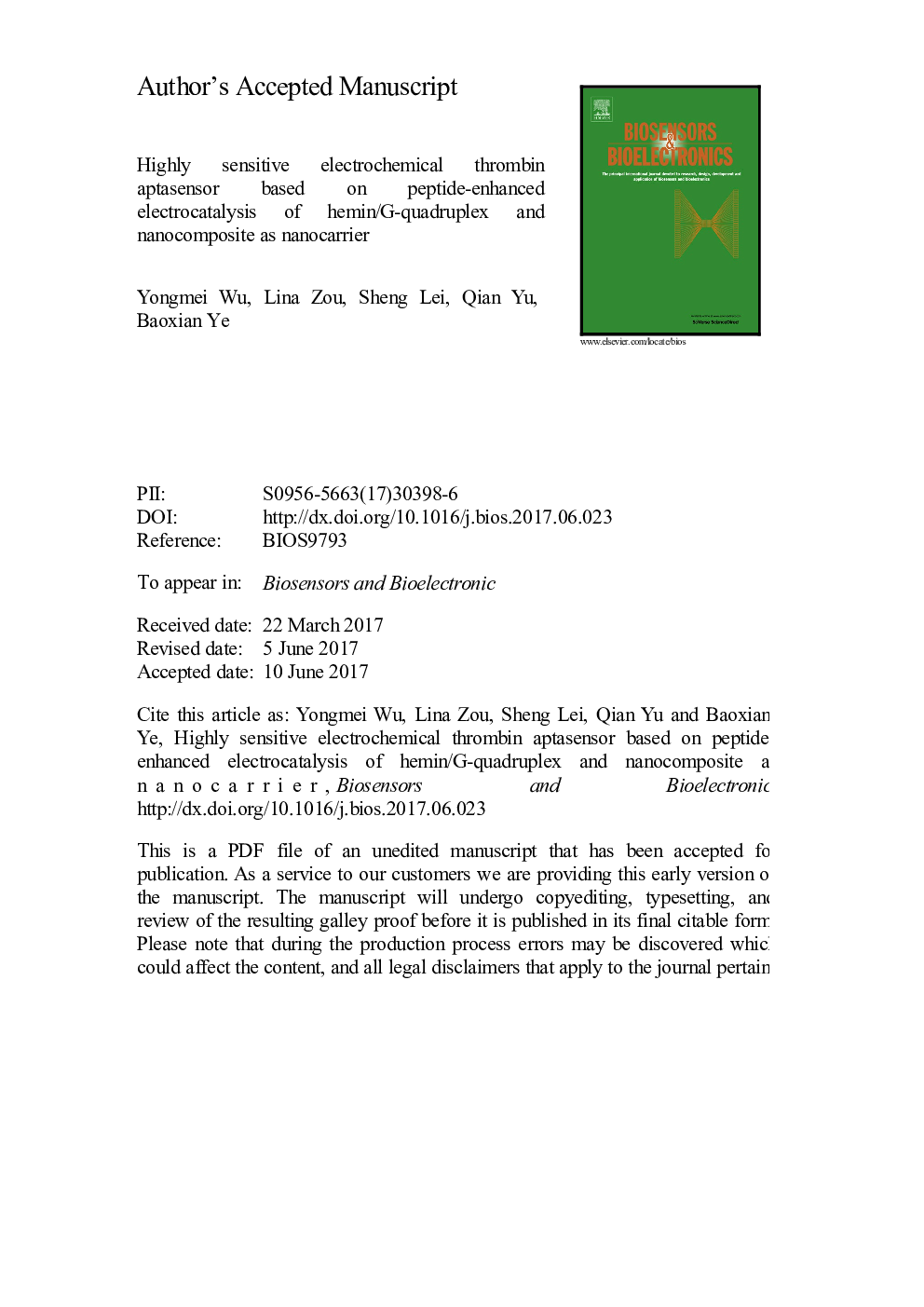| Article ID | Journal | Published Year | Pages | File Type |
|---|---|---|---|---|
| 5030995 | Biosensors and Bioelectronics | 2017 | 29 Pages |
Abstract
In this work, we first conjugated a short peptide to thrombin binding aptamer (TBA) and bond hemin to the hybrid, effectively rendering hemin/G4-peptide more active over the original hemin/G4, so that a highly sensitive electrochemical thrombin (TB) aptasensor was developed based on it and PtNTs@rGO nanocomposite. It was the first report on the application of hemin/G4-peptide in electrochemical aptasensor. PtNTs@rGO with large surface area served as excellent nanocarrier for high loading of hemin/G4-peptide hybrids, resulting in the formation of hemin/G4-peptide-PtNTs@rGO bioconjugate as the secondary aptamer and further signal enhancement. The specific affinity of aptamer for target TB made the secondary aptamer go into the sensing interface, and then a noticeable current signal was obtained from hemin without additional redox mediators. Due to the collaborative electrocatalysis of hemin/G4-peptide and PtNTs toward H2O2, which was formed in situ during the process of hemin/G4-peptide-catalyzed oxidation of NADH with dissolved O2, the current intensity increased dramatically. Such an electrochemical aptasensing system could be used to detect TB with a linear range of 0.05 pM-60Â nM and very lower detection limit of 15Â fM. Notably, this method exhibited a higher sensitivity than that of many hemin/G4-based electrochemical strategies for TB detection due to the improvement of the catalytic activity of hemin/G4-peptide. The present works opened a new way for expanding the application of hemin/G4 in biological detection. With the mediator-free, proteinous enzyme-free yet high-sensitivity advantages, this electrochemical aptasensor held great promise for other biomarker detections in clinical diagnostics.
Related Topics
Physical Sciences and Engineering
Chemistry
Analytical Chemistry
Authors
Yongmei Wu, Lina Zou, Sheng Lei, Qian Yu, Baoxian Ye,
